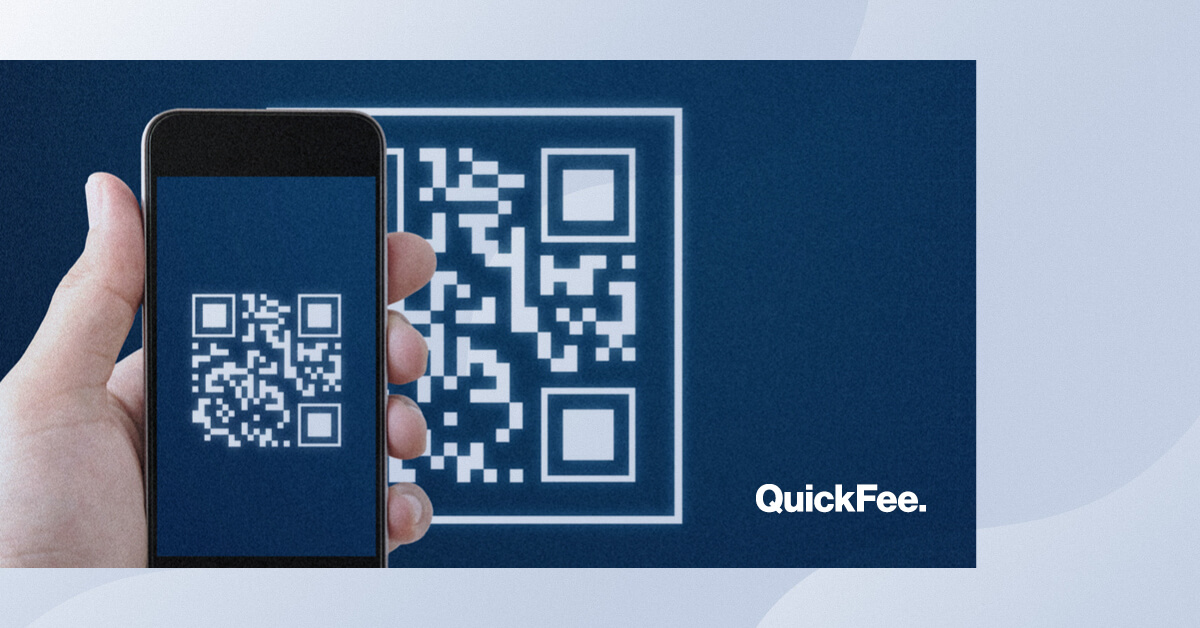Who would have thought that a twenty-something old piece of tech would make a comeback in the 2020s? Especially in the B2B space?
We’re talking QR codes — which have been around since 1994 — but they’re experiencing sudden popularity within the last few years. Because of their contactless payment capability, QR codes are being brought back thanks to the COVID-19 pandemic to enhance customer experiences.
QR codes offer remote digital accessibility for end-users, which is great for contactless interactions, including payments.
A Raydiant study found, “Over 80% of consumers have used contactless payments [from May 2020 to May 2021].”
As unique digital links, QR codes are easy to create, send, use, and integrate with digital payment processing. So what role do QR codes play with customer payments?
Can B2B Customers Pay With QR Code?
QR codes can be used for businesses in nearly every industry, and for any user with a mobile device.
Even though QR codes have been around for 23 years, many people are only now learning how to use them in the past few years. Starting in 1994 Japan, auto manufacturing company Denso Wave created the Quick Response (QR) code to expedite operations.
“More than three-quarters of Americans use some form of digital payment, which we define as any of the following: browser-based and in-app online purchases, in-store checkout using a mobile phone and/or QR code, and person-to-person payments.”
The 2021 McKinsey Global Payments Report
Maybe you’ve seen QR codes in restaurants and bars in place of physical menus. Other businesses have gotten creative with QR codes to reduce physical contact, especially since the number of mobile payment users has sky-rocketed. According to a Juniper study,
“ … the total number of QR code payment users will exceed 2.2 billion in 2025, up from 1.5 billion in 2020; equating to 29% of all mobile phone users across the world in 2025.”
So yes, you can pay with QR codes — They have been used for B2C organizations, and now for B2B. Businesses can provide QR codes to access their payment tools in place of physical invoices, checks, and bills.
But why would anyone want to pay with a QR code in place of other payment types? There are many benefits to utilizing these kinds of payments as an addition to digitally transformed businesses.
Benefits of QR Code Payments
The main purpose of the QR code is to take a user to a specific landing page or application with just a few taps of a mobile device. This vital feature has caught the attention of businesses and users worldwide and implemented it into their daily operations.
According to a PayPal-sponsored PYMNTs survey from Nov 2020, “60 percent [of] consumers … would be more willing to shop with brick-and-mortar merchants if they offered digital in-store payment options.”
Take a look at these benefits of accepting payments with QR codes:
QR codes allow contactless payments.
With the exception of the mobile device itself, QR codes allow merchants to offer more options to physical payment methods such as checks, paper bills, etc.
QR codes are accessible from mobile devices.
The end landing page or application can be accessed anywhere, anytime after a QR code is scanned (at a physical location or online).
QR codes are easy to create.
QR code generators are available for any user, and codes can be placed wherever businesses want to display them.
Try out this quickfee.com code:

QR codes are easy to design, and more recently allow users to add branding and other customizations. For businesses, it almost takes as much time for a consumer to scan a QR code as to create one.
But what does the process of accepting a QR code payment look like?
How Do QR Code Payments Work?
QR Code payments are comparable to digital wallets, card-swiping, etc., but they function a little differently.
Here are the steps to paying with QR codes, although depending on the business, it may look different:
- A business creates a QR code via a generator to place it online, on signs, or wherever else visible. (See more about QR code generators below!)
- End users scan QR codes via mobile device.
- The QR code takes the user to a payment portal.
- The user submits their payment information.
- Done — the payment is made!
QR Code Generators for Your Business
Let’s take a look at some QR code generators you can use for your business.
- qr-code-generator.com offers a business-specific generator with several design options.
- With a premium membership, Beaconstac’s generator has a plethora of options for linking business information.
- Microsoft Office users can install QR code generator plugins such as Barcodes Generator.
- You can also find these plugins for Adobe Suite like QR Code Maker Pro.
If your business could use some digital transformation with customer payments (like QR), we have a solution just for you.
How To Pay Using QR Codes With QuickFee
When you get started, we’ll help you set up a QR code that links to your QuickFee payment portal (and will help you get paid faster.) Here’s how it works.
- Your business will be provided with a unique QR that routes to your QuickFee payment page (or a landing page on your website.)
- Place the QR code on invoices, flyers, and other client-facing pieces.
- Customers scan the QR code with their smartphone.
- Customers can pay online right then and there!
Collect payments faster with QR Codes
QR code payments can be set up and used by anyone, including small businesses. Taking advantage of the contactless payment method could boost your customer engagement and cash flow. Take it from a BKM Marketing report,
“Global mobile payments [including mobile-based NFC payment] adoption is expected to grow by about 27 per cent (CAGR, 2020–2025).”
Consider digitizing your payment processing for easier, more flexible, and contactless payments.
Schedule a demo to find out more about accessible B2B payments.
